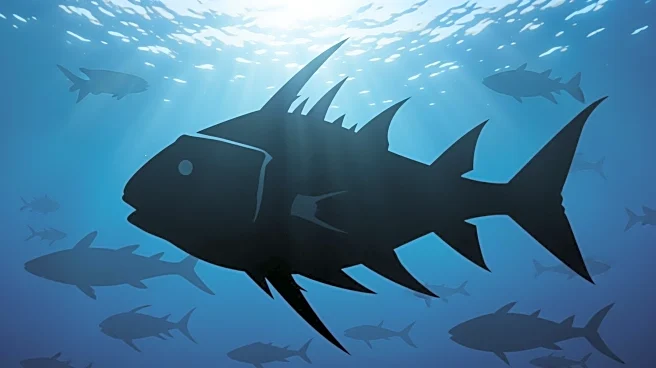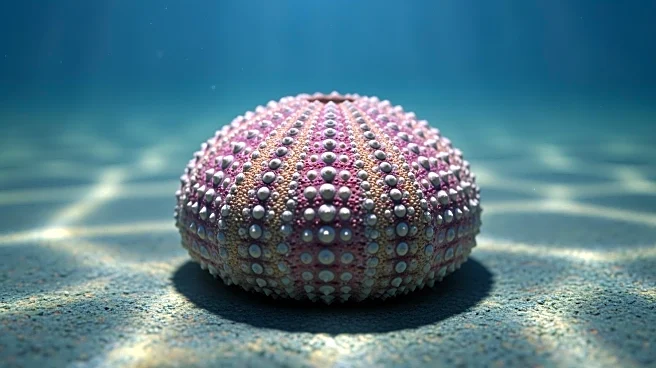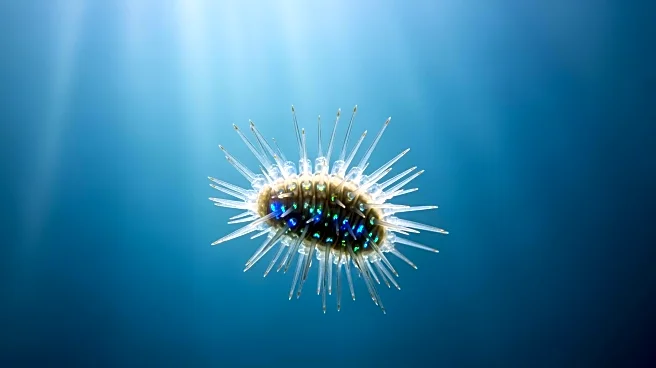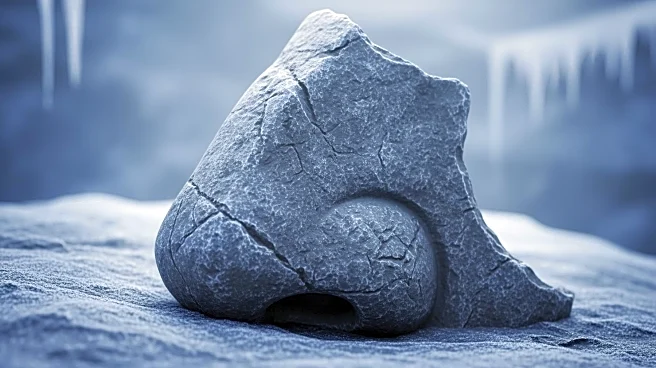What's Happening?
Recent studies have uncovered new insights into Dunkleosteus terrelli, a prehistoric armored fish from the Devonian Period. Researchers at Case Western University found that Dunkleosteus had a unique jaw
structure with bone blades instead of teeth, unlike most arthrodires. The study revealed that nearly half of its skull was made of cartilage, similar to modern rays and sharks. These findings challenge previous perceptions of Dunkleosteus as representative of arthrodires, highlighting its distinct evolutionary adaptations for hunting large prey.
Why It's Important?
Understanding the unique characteristics of Dunkleosteus provides valuable insights into the evolutionary history of marine predators. This research contributes to the broader knowledge of how ancient species adapted to their environments, influencing modern marine biology and paleontology. The study also emphasizes the diversity within arthrodires, prompting reevaluation of their ecological roles and evolutionary pathways.











